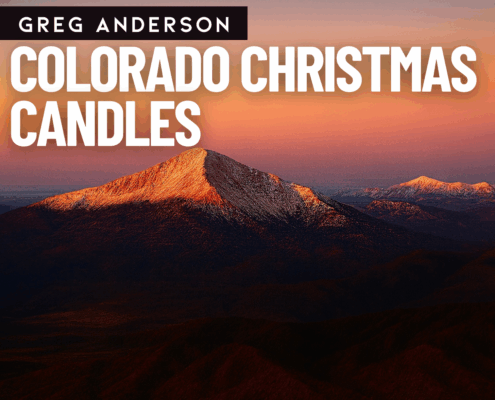
Colorado Christmas Candles
Christmas special, I was thereOn a quiet Christmas Eve departure from Denver, Greg Anderson climbs into the darkness and witnesses a once-in-a-lifetime display of Colorado’s 14ers igniting with the first light of dawn. What follows is a vivid, graceful reflection on perspective, wonder, and the meaning of Christmas from a pilot’s seat.
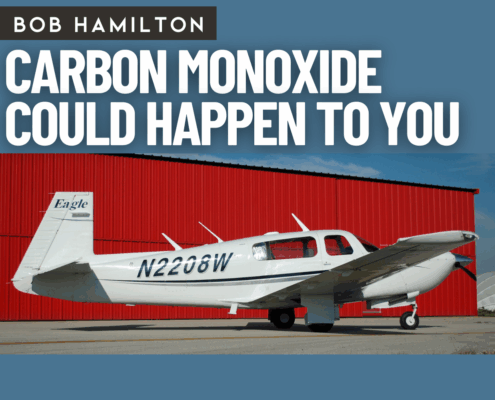
Be Ready! Carbon Monoxide Could Happen to You
I was thereA routine self-training flight turned dangerously life-threatening when my cockpit carbon monoxide detector spiked to 300 ppm. Muscle memory and quick thinking got me safely back on the ground, but the experience was a wake-up call: CO in small GA aircraft can be silent, fast, and deadly. Here’s my story – and why every pilot should have a reliable CO detector in their plane.

A Very Close Call
I was thereA routine Beech 99 takeoff from St. Louis in 1978 turned into a life-or-death struggle when the right engine exploded at 50 feet AGL. With icing in the clouds and an old terminal building directly ahead, Joel Turpin had only seconds to react. Decades earlier, he had wandered that same ramp as a wide-eyed 6-year-old; now, that building nearly ended his career—and his life.

A Tale of Three Airports
I was thereThe forecast called for a thin but stubborn cloud deck, low enough that I doubted we’d make it into Stockerau. With that in mind, I lined up Plan B: Bad Vöslau (LOAV). Unlike Stockerau, Bad Vöslau offers an RNAV (GNSS) approach to RWY 31—a reliable “cloud breaker” that could give us a fighting chance to get underneath the layer. I called ahead before departure, and they reassured me: “Shouldn’t be a problem” (or “Passt,” as they said in Austrian-German).

Remembering Yesterday—Reflections of Joseph Connell
I was thereI flashed back to late January of 1961. I was an Aviation Cadet at Vance AFB in Oklahoma, nearly five months away from receiving my commission and pilot’s wings. Our group, Class 61-G2, was the final class of the Aviation Cadet Program. That still, windless morning, I donned my oxygen mask and prepared to fly.

The Power of Mentorship: How One Pilot Rekindled My Passion for Flying
I was thereOne afternoon, while my wife took a break, I went on a solo exploration. It was during this time that a chance encounter would change everything. I walked by a Lancair covered in sponsor logos, with large numbers on the tail. I noticed several other airplanes with similar numbers. I had stumbled into parking for the AirVenture Cup Race.

Asserting a Captain’s Authority
I was thereThere was a flurry of activity all over the airplane—into which strode Mr. Federal Aviation Inspector Extraordinaire. He proceeded to come into the cockpit and inform me, in no uncertain terms, that this was going to be a “line check” to East Midlands. I asked if he was qualified on the 737, to which he huffily replied, “I certainly am. I am type-rated on the 737.”

The Day Everyone Crashed a Glider
I was thereOne of my first customers, a kid I’ll call Joey, was my youngest so far but also the most troubling. Maybe ten years old, he acted more like thirty-five, with a sneering confidence and an air of having already seen it all. In my cynical imagination, I figured I’d be hearing about Joey again—maybe later that month—when he’d make headlines for stealing the family car and driving it to Taco Bell propped up on sofa cushions.

From Sim to Reality: How a Piper PA-28 Changed Everything
I was thereWe started talking about airplanes, and I told him I liked flying but had never really flown. He mentioned that he had a YouTube channel—Josh’s Aviation Adventures—and had one of his videos playing on a laptop. Then he said something that changed my life. He put his hands on my shoulders and said, “I’m bored. You want to go fly?”
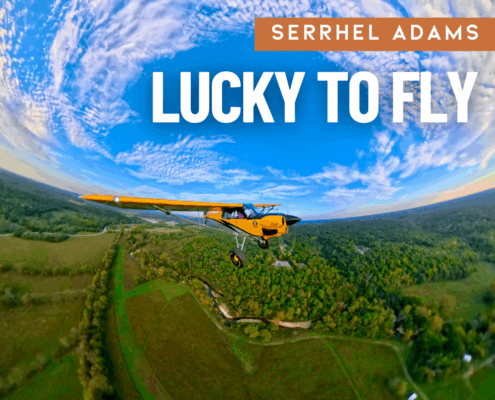
Lucky to Fly
I was thereFor Serrhel Adams, flying has always been a passion. But when his mother’s health declined, it became a lifeline — a way to be present for the moments that mattered most.
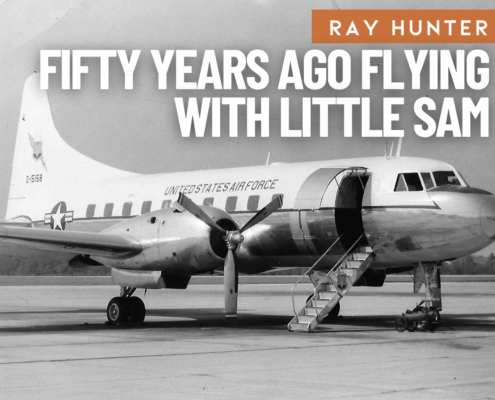
Fifty Years Ago Flying With Little SAM
I was thereMissions were under the strict operational control of the Army. We often flew to Andrews AFB and occasionally swapped stories with the “Big SAM” crews of the 89th Airlift Wing—stories about our high-ranking passengers, never to be repeated of course. We flew in and out of Army airfields throughout the Southeast and beyond. I once spent a week flying the commander of the Third Army and never left the state of Georgia. Civilian guests of Army VIPs sometimes included governors, business leaders, and other politicians.

A New Chapter in Airplane Ownership
I was thereAfter selling his trusty Piper Warrior, Galen King set out to find his next airplane—a capable IFR traveler with some speed and comfort. His search led him from Mooneys to Bonanzas, and eventually to Kansas, where an A36 and its former Beechcraft engineer-owner made a lasting impression. The story of one pilot’s hunt for the perfect airplane—and the satisfying flight home.

Old Piet and Mr Piper
I was thereFor many years, Piet’s company—Placo (the Pretoria Light Aircraft Company)—was the best-selling Piper dealership outside the USA. Old Piet and William T. Piper would remain firm friends for the next 25 years, until Piper’s death in 1970. But Piet still faced a problem: 300 airplanes in America, and no money to get them to South Africa.
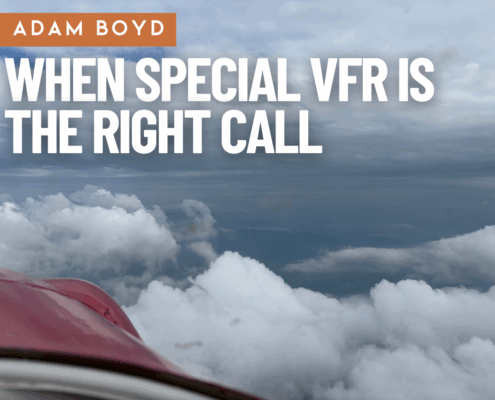
When Special VFR Is the Right Call
I was thereAt 5:30 a.m., I awoke to light rain—the forecast had arrived sooner than expected. By midday the rain had tapered, but the ceiling stubbornly remained at 900 feet. Visibility was excellent, around 10 miles. A check of nearby METARs showed clear skies just a few miles north, with ceilings above 5,000 feet and improving. I realized this was a classic SVFR moment. I didn’t want to file IFR. Conditions were VFR just outside the Class D surface area; the only obstacle was the low ceiling at KJQF.
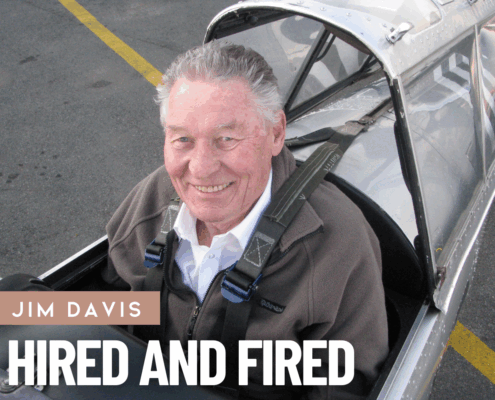
Hired and Fired
I was thereMy duties at Placo included making tea, polishing aircraft, vacuuming interiors, and blacking tires. Zingi mentioned I’d occasionally fly with the big boss, who feared a heart attack and wanted another pilot aboard in case he collapsed. I knew my meager skills would do little to delay our demise should Old Piet falter at the controls.

“Thirty Charlie”
I was thereEddie was in his 60s when I met him, sitting in his hangar office. I introduced myself, but he never used my name. To him, I was “Ace,” like all his students. Eddie was incredibly personable and sold me on flying with him from that first meeting. He flew a Piper Cherokee 180, N7630C, and his rate—aircraft, fuel, and instruction—was $40 an hour. I booked my first flight.

Captain’s Authority
I was thereAs a TWA B-747 Captain, I was scheduled to fly TWA 800 from JFK to Paris (CDG). When I reported for my flight at the hangar at JFK, I was greeted by a Check Pilot who told me he was going to give me an unannounced checkride to Paris and back. I told him that was not going to happen—I was not going to allow him into my flight deck.

Deadstick in the Cassutt
I was therejust ahead, I spotted an overpass with a parallel frontage road running downhill, lined with trees. Instinct took over. I pulled over the trees, lined up with the road, and held centerline while the branches whipped by on either side. Too fast, and it was my first Cassutt landing. I kicked rudder to skid and scrub off speed. Just as I was about to set down, I noticed a single power line crossing the road. Normally I’d slip under it, but the only car on the road was about to pass underneath at the same time. Now too slow to climb over, I slid under the wire and over the car, then touched down safely.

Corrosion Where You Least Expect It
I was there, UncategorizedOur aircraft have annual inspections. And during those inspections, areas are opened and examined for deficiencies, including corrosion. Areas that we use daily and those small hard to get to locations are examined as well. As it turns out, corrosion can show up where you least expect it. Specifically, in the guy sitting at the controls flying the aircraft through the sky.

Helping Nervous Flyers Conquer Their Fear
I was thereI was recently asked by a fellow flying club member to take his wife—a fearful flyer—on a flight. Spoiler alert: the flight went well, and my friend’s wife got out of the airplane grinning from ear to ear. Here’s what I did before and during the flight, and what I learned.
